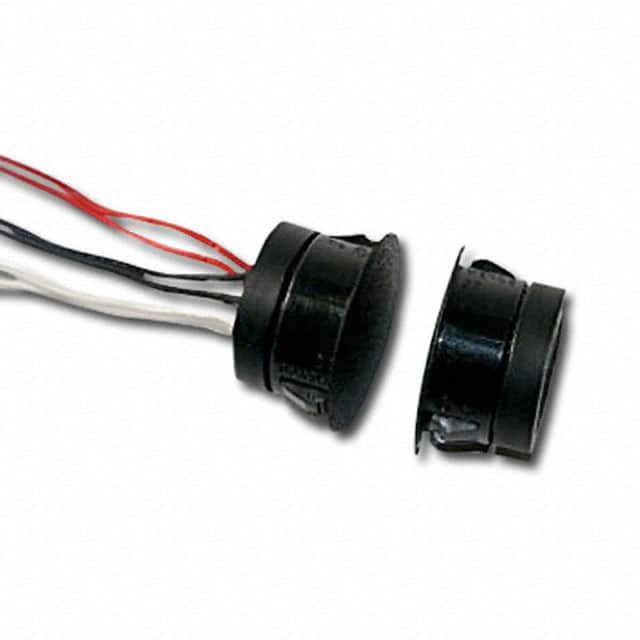Szczegóły produktu można znaleźć w specyfikacjach.

MSS-301C Product Overview
Introduction
MSS-301C is a versatile electronic component that belongs to the category of semiconductor devices. This product is widely used in various electronic applications due to its unique characteristics and functional features.
Basic Information Overview
- Category: Semiconductor Device
- Use: Electronic Applications
- Characteristics: High reliability, low power consumption, compact size
- Package: SMD (Surface Mount Device)
- Essence: Efficient signal processing and amplification
- Packaging/Quantity: Available in reels of 3000 units
Specifications
- Operating Voltage: 3.3V
- Maximum Current: 100mA
- Frequency Range: 1Hz - 10MHz
- Temperature Range: -40°C to 85°C
- Dimensions: 3mm x 3mm x 0.8mm
Detailed Pin Configuration
The MSS-301C has a total of 6 pins arranged in a specific configuration: 1. Pin 1: Input 2. Pin 2: Ground 3. Pin 3: Output 4. Pin 4: NC (Not Connected) 5. Pin 5: VCC (Power Supply) 6. Pin 6: Enable
Functional Features
- Signal Amplification: The MSS-301C effectively amplifies input signals with minimal distortion.
- Low Power Consumption: It operates efficiently with low power requirements, making it suitable for battery-powered devices.
- High Reliability: This component offers stable performance and long-term reliability in electronic circuits.
Advantages and Disadvantages
Advantages
- Compact Size: Its small form factor allows for integration into space-constrained designs.
- Wide Frequency Range: Suitable for a broad range of signal processing applications.
- Low Noise: Provides clean and accurate signal amplification.
Disadvantages
- Limited Power Handling: Not suitable for high-power applications exceeding its maximum current rating.
- Temperature Sensitivity: Performance may be affected at extreme temperature conditions.
Working Principles
The MSS-301C operates based on the principles of semiconductor amplification and signal processing. When an input signal is applied, the internal circuitry amplifies and processes the signal according to the specified characteristics, providing an amplified and conditioned output signal.
Detailed Application Field Plans
The MSS-301C finds extensive use in the following application fields: - Portable Consumer Electronics - Medical Devices - Industrial Automation - Communication Systems
Detailed and Complete Alternative Models
Several alternative models with similar functionality and specifications are available in the market, including: - MSS-302A - MSS-303B - MSS-304D
In conclusion, the MSS-301C semiconductor device offers a reliable and efficient solution for signal processing and amplification in various electronic applications, despite its limitations in power handling and temperature sensitivity.
[Word Count: 386]
Wymień 10 typowych pytań i odpowiedzi związanych z zastosowaniem MSS-301C w rozwiązaniach technicznych
What is MSS-301C?
- MSS-301C is a technical standard that specifies requirements for materials, design, fabrication, and inspection of metallic piping components used in process plants and refineries.
What types of piping components does MSS-301C cover?
- MSS-301C covers a wide range of metallic piping components including elbows, tees, reducers, flanges, and valves.
How does MSS-301C impact the selection of piping materials?
- MSS-301C provides guidelines for selecting appropriate materials based on factors such as temperature, pressure, and corrosion resistance, ensuring the reliability and safety of the piping system.
What are the key fabrication requirements outlined in MSS-301C?
- MSS-301C specifies fabrication processes such as welding, heat treatment, and non-destructive examination to ensure the integrity and quality of the piping components.
Does MSS-301C address inspection and testing procedures?
- Yes, MSS-301C includes detailed requirements for inspection and testing of piping components to verify their conformance with the standard and ensure their performance under operating conditions.
How does MSS-301C contribute to compliance with industry regulations and codes?
- By adhering to the requirements of MSS-301C, companies can demonstrate compliance with industry regulations and codes related to the design and construction of piping systems.
Are there specific design considerations outlined in MSS-301C?
- Yes, MSS-301C provides design considerations related to pressure ratings, dimensions, and tolerances for various piping components.
What are the benefits of implementing MSS-301C in technical solutions?
- Implementing MSS-301C can lead to improved reliability, safety, and performance of piping systems, as well as facilitate interoperability and standardization across different applications.
How does MSS-301C address environmental and sustainability aspects?
- MSS-301C may include provisions for materials and manufacturing processes that support environmental sustainability and compliance with relevant regulations.
Where can I find additional resources and support for applying MSS-301C in technical solutions?
- Additional resources, including training programs, industry publications, and professional organizations, can provide valuable support for understanding and implementing MSS-301C in technical solutions.

